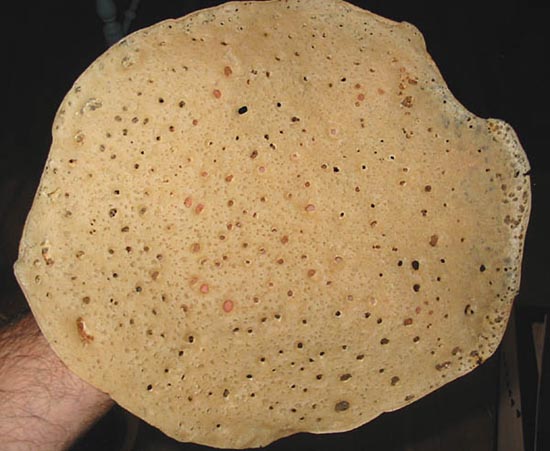Facts About Somali cuisine
Somali cuisine is a captivating fusion of flavors and traditions, influenced by the country's rich history of trade and cultural interaction. Here are some notable dishes you might encounter:
- Sabayad: A type of flatbread
- Lahoh: A spongy, pancake-like bread
- Xalwo: A sweet, gelatinous dessert
- Sambuusa: A savory pastry, similar to a samosa
- Bariis Iskukaris: A spiced rice dish
- Odka: Dried meat
It is important to note that pork is absent from Somali cuisine, as it is prohibited by Islamic dietary laws.
Breakfast (Quraac): Mornings often begin with tea or coffee, accompanied by canjeero, a flat, pancake-like bread.
Lunch: Midday meals might include pasta or rice dishes, enhanced with a fragrant mix of spices such as cumin, cardamom, cloves, and sage. Popular refreshing drinks include balbeelmo (grapefruit juice), raqey (tamarind drink), and isbarmuunto (a mix of various fruits).
Dinner: Evening meals may feature dishes like cambuulo (a mix of adzuki beans and rice), rooti iyo xalwo (bread with sweet gelatin dessert), and muufo (a type of bread).
Snacks: For a quick bite, you might enjoy sambuusa, kabaab, or fresh fruits such as mango and banana.
Sweets: Somali cuisine boasts a variety of delectable sweets, including xalwo (a sweet, gelatinous dessert), gashaato (coconut confection), lows iyo sisin (peanut and sesame mix), jalaato (ice cream), buskut (cookies), doolshe (cake), icun (candy), basbousa (semolina cake), and baklava.
After meals, it is a charming tradition to perfume the home with frankincense or incense, adding a fragrant touch to the dining experience.

 Djibouti
Djibouti